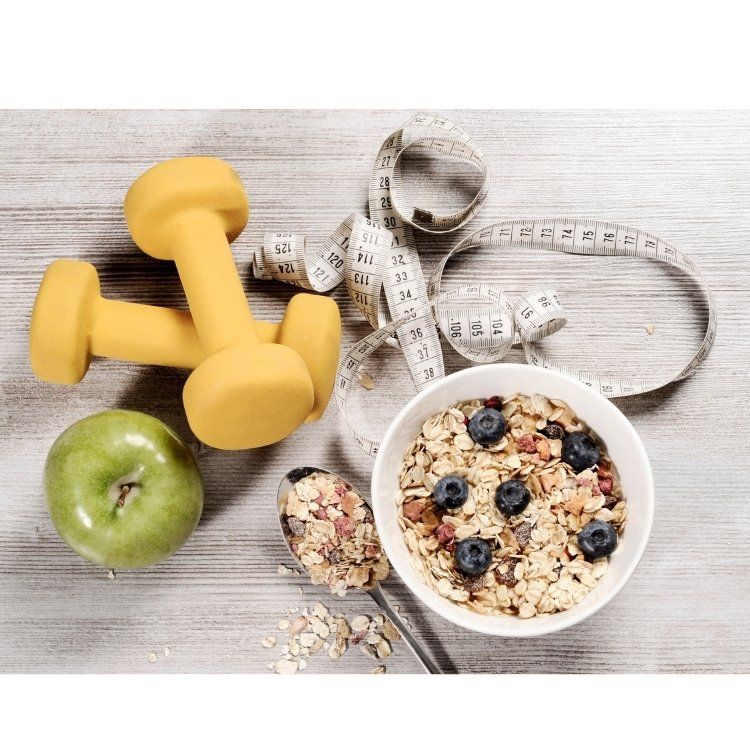How to Beat Sugar Cravings and Emotional Eating in Midlife
How to beat menopausal cravings

If you find yourself reaching for chocolate at 3pm or mindlessly snacking late at night even when you are not truly hungry – you are not alone. Sugar cravings and emotional eating are incredibly common in midlife, especially during perimenopause and menopause. But here is the thing – it is not just about willpower. There is so much more going on beneath the surface.
As a dietitian and somatic psychotherapist, I work with women every day who feel like food has become a coping tool. And it makes sense. Your hormones are shifting, stress levels are higher, and your nervous system is likely stretched thin and with all the underneath changes is definitely less resilient.
So Let’s unpack why these cravings are happening and what you can do about it – with kindness and using real strategies that work.
Why Sugar Cravings Spike in Midlife
1. Hormonal Fluctuations
As oestrogen and progesterone levels shift, so do your neurotransmitters like serotonin and dopamine. These are the feel-good chemicals that help regulate mood. When they drop, your body craves quick hits of pleasure – and sugar is the fastest fix.
2. Insulin Resistance
Many women over 40 begin to experience a decline in insulin sensitivity. This makes it easier for blood sugar to spike and crash – and when it crashes, the cravings kick in. You feel tired, foggy or irritable, and sugar becomes a quick escape.
3. Emotional Overload
Midlife can be emotionally intense. You may be juggling work, family, ageing parents, changing identity or unprocessed grief. Food becomes a buffer. It soothes, distracts and numbs – for a moment.
How to Break the Cycle
1. Balance Your Blood Sugar
This is foundational. When your blood sugar is stable, you reduce cravings and improve your mood and energy.
- Eat protein and healthy carbs like quinoa, teff, amaranth, buckwheat, millet, pumpkin, sweet potato and potato at every meal
- Add fibre-rich veggies and ensure more than 1/2 your plate for lunch and dinner is made of either salad or vegetables
- Avoid skipping meals and aim to eat every 3-4 hours
- Avoid processed carbs and sugary snacks
- Drop alcohol and caffeine... thats right that cup of coffee is hurting your waist line
2. Prioritise Sleep and Nervous System Regulation
Lack of sleep and chronic stress drive cravings through the roof. Lack of or poor sleep stresses your body and nervous system and when your nervous system is dysregulated especially since stress is around every corner, your body seeks quick comfort – and sugar, fats and carbs are the easiest option.
Daily practices that help:
- Ensure you got to bed and wake up the same day everyday including weekends. This will help regulate your circadian rhythm.
- Avoid blue light exposure coming from your devices 2-3 hours before going to bed
- Dim the lights after sundown and use twilight lightbulbs throughout the house
- Listen to soothing 432 Hz music before bed and try to meditate
- Establish a practice where overnight you make it a point during having a shower to visualise the water washing away your day. You should empty yourself body, mind and energy of the day and go to bed empty.
- Restorative movement like yoga or gentle stretching
- Deep belly breathing in the morning doesn't only help your digestion but also supports relaxation. See video below for suggestions.
4. Crowd Out, Not Cut Out and Super Hydrate
Instead of focusing on restriction, focus on adding in more nutrient-rich, satisfying foods. Over time, your body will crave balance more than sugar.
Options include:
- Increase fibre intake by ensuring you have min 3 meals per day containing vegetables, whole grains, legumes, nuts and seeds.
- Increase magnesium-rich foods (pumpkin seeds, almonds, leafy greens, legumes)
- Go for natural sweetness like berries, figs, apricots or dates which are also rich in iron a nutrient often craved the week before your period
- Increase intake of red meat to 2-3 times per week the week before your period
- Stay well hydrated- the body doesn't know the difference between hunger and thirst and this its hungry. Before eating drink 2 cups of water and if still hungry then get.
- To know how much you should drink multiply your body weight by 0.35 ml.70 X 0.35 ml = 2.45ml. Add another 500 ml if hot outside or if sweating especially due to exercise. If feeling thirsty you are still dehydrated so please add extra to your estimation.
4. Nourish Yourself Emotionally
Emotional eating is not a failure. It is a sign your body is asking for something – comfort, connection, rest or release. Its saying I am in pain and need your help.
Try this:
- Pause and ask: What am I really needing right now and what are all my options available that can satisfy this need without compromising my health and goals?
- Find non-food ways to comfort yourself: a warm bath, grounding walk, exercise, empowering music, dancing, breathwork, stretching, meditation, painting, drawing, chatting to a friend,
- Keep a journal to explore patterns- we all carry unresolved trauma and emotions which when undigested manifest in repeating and annoying behavioural patterns. These appear to invite acknowledgment, processing and release so you can move forward with greater ease and your body can once more find balance.
- Allow space to feel emotions rather than push them down. If something comes up for you try to stay open and curious. It is your body saying she needs support from you. The more you learn to pause, listen and respond accordingly the more your body will stay in balance making cravings a thing of the past.
5. Reconnect with Your Body
This is where somatic therapy shines. When you feel disconnected, overwhelmed or checked out, food often becomes the tool to bring sensation back.
Use your body to reconnect:
- Dance or shake to move stuck emotion
- Place a hand on your belly and one on your chest and breathe slowly
- Tune in to where you feel hunger, emotion or tension and bring relaxation and compassion to that area
- If feeling very unsafe, anxious, depressed or overwhelmed it's best to seek professional help from a somatic psychotherapist which can support you holistically.
The more present and safe you feel in your body, the less you will reach for food to ground you. Unfortunately feeling safe its easier said than done as this is a complex topic for another blog. Feeling unsafe is the major driver for our behaviours and the fear that accompanies this state is something felt by everyone. The greater the fear the greater the denial, suppression and avoidance. And food is a powerful tool to change a frighten chemistry. Binging on carbs can increase dopamine and serotonin and for a short while can lift our mood. Unfortunately this approach is not sustainable as shortly after you will experience a crash and feel worse. This chemical pattern alone can trigger shame and quilt and lead to diseases like diabetes, high cholesterol, liver inflammation and eating disorders and that's why I recommend working with a somatic psychotherapist.
Finally....
Cravings are not the enemy. They are messengers. When you learn to listen instead of judge, they lose their grip on you.
Midlife is a time of deep transformation. Your body is changing, yes – but so is your relationship to self. You can shift from using food to numb, to using nourishment to feel more alive and connected.
If you are ready to explore this journey with support please book an appointment where we can assess your current state and create nutrition, emotional and lifestyle strategies that actually work.
You deserve to feel free around food. And you can get there, one kind step at a time.
To book a nutrition and somatic therapy consultation visit www.ancavereen.com




